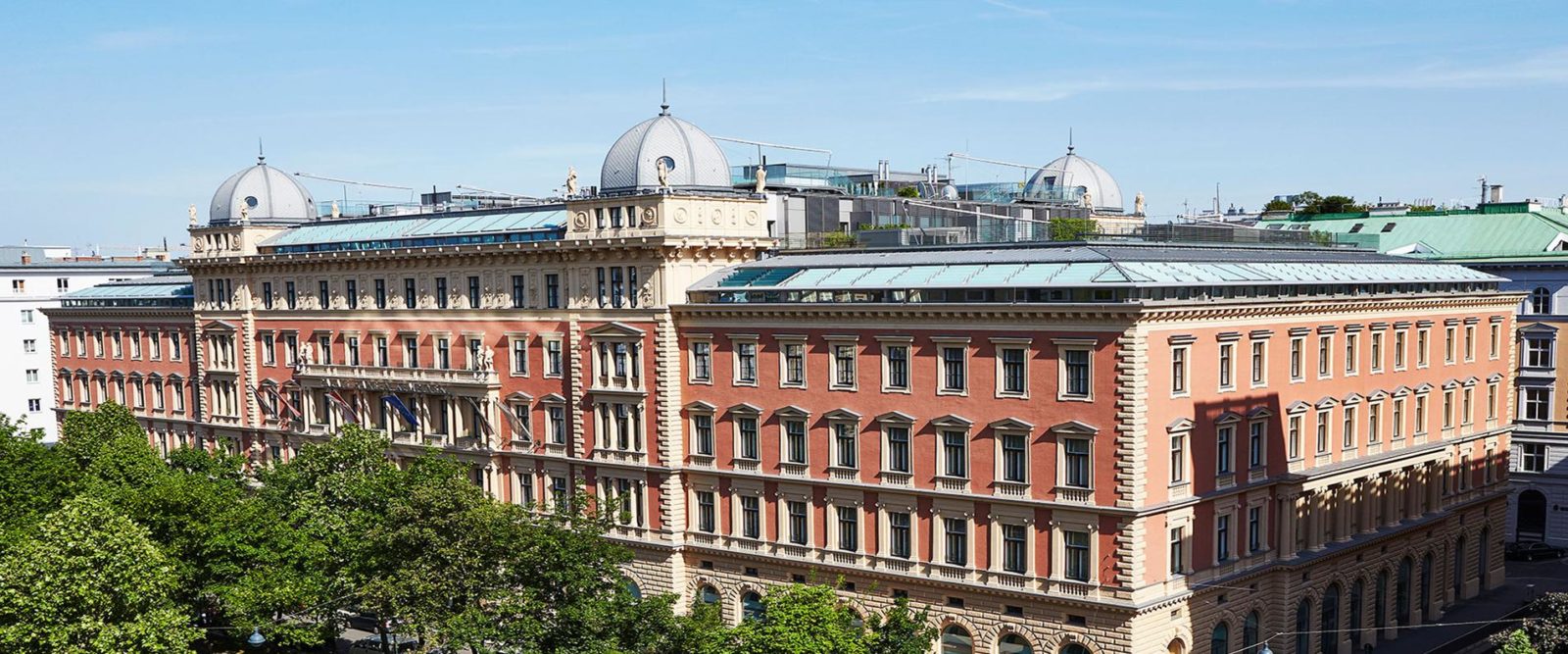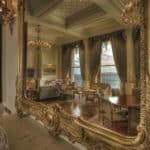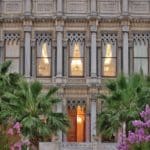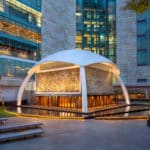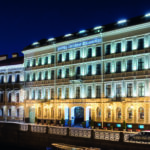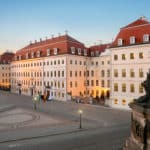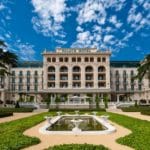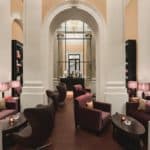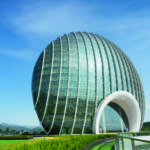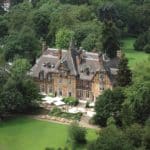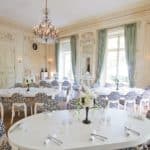Geneva, Switzerland – 20 September 2017 –
From sultans’ palaces to Art Nouveau through Bauhaus and Secession to the top of modern architecture, there is an impressive variety of architectural styles to be discovered when staying at Kempinski Hotels around the globe. Pioneers in their destination, the hotel buildings allow guests to immerse themselves in the local culture and history while experiencing a traditional sense of luxury and excellence. It is by maintaining the hotel’s identity that Kempinski strives to create in each stay a distinctive memory. While Berthold Kempinski, the famous founder of Kempinski Hotels, has left his own legacy that has now lasted 120 years, each of the 76 properties has an individual story to tell. Here is a choice of buildings, which would be able to write a novel if only they could talk.
Cradle of the Federal Republic of Germany
The boutique hotel Villa Rothschild Kempinski in Königstein near the vibrating city of Frankfurt/Main is today an impressive witness of German history. Built between 1888 and 1894 as a summer residence for the renowned banker family Rothschild, it had a pompous opening in the year 1894 that was celebrated with high-ranking guests, such as Empress Victoria and the Prince of Wales. After World War II, the estate became the heart of the political and economic reconstruction of Western Germany. In this unique location, the decisive contracts for the founding of the Federal Republic of Germany were signed, and therefore Villa Rothschild Kempinski can truly be called the “cradle of the Federal Republic of Germany”.
Palais Hansen
Built between 1869 and 1873, the listed palais is among the most important historic buildings in Vienna. Heinrich Förster and Theophil Edvard Hansen were in charge of the planning, and the latter, one of the most important architects of Ring Boulevard, also built the Parliament and the Museum for Applied Arts. After his studies in Vienna, the Danish architect spent eight years in Athens – which is reflected in the characteristic pillars in his buildings. Originally planned as a hotel for the world exhibition in 1873, the palais did not open as such. It was home to the police headquarters and different municipal departments until 1997, when the City of Vienna sold the building. Yet, the wish to put the building to its originally intended use persisted. Therefore, Palais Hansen Kempinski’s Immobiliengesellschaft teamed up with the Kempinski Group to start their painstaking restoration and to remodel the building into a hotel.
A symbol of love and witness of time
At the beginning of the 18th century, August the Strong, the elector of Saxony and King of Poland, built the Taschenbergpalais as a gift for his favourite mistress and true love, Anna Costanzia, the Countess of Cosel. Over the years, the palace became a symbol of grace and glory. However, everything came to a quick end when Anna tried to influence August’s politics – a scandal and not acceptable in a world ruled by men. The countess had to leave Dresden, but the Taschenbergpalais, even after its complete destruction during the Second World War, is still a witness of time. Nowadays, Hotel Taschenberg Kempinski Dresden is known as one of the most beautiful Grand Hotels in Europe.
A sultan’s palace full of timeless elegance
The only Ottoman Imperial Palace and Hotel on the Bosphorus that once hosted sultans, Ciragan Palace Kempinski has a heritage that dates back to the 17th century. The building had different formations until the 19th century, including a waterside summer villa and a marble palace. In 1871, Sultan Abdülaziz redesigned the palace with famous architects of the Balyan family, veterans of palace design in the Ottoman Empire. For the construction of the palace, the finest marbles, porphyries, mother-of-pearl and other valuable materials were brought from all over the world. In 1909, Ciragan Palace was selected as the site for a significant meeting of the Turkish Parliament, and shortly after the conclusion of the meeting, the palace interiors were substantially destroyed by a fire. From 1930 on, the Besiktas Football Team used the garden of the palace as their football stadium. The building stayed unkempt for long after the fire, and finally in 1991, after a complete restoration and with the addition of a modern hotel building including elegant rooms, restaurants and meeting venues, the hotel reopened. Since its opening, the royal-born continues to be the symbol of luxury and impeccable service combined with legendary Turkish hospitality.
A legendary Mediterranean pearl of luxury
For over 100 years, the iconic hotel has played a key role in the life of Portorož in Slovenia. This Palace Hotel was built between 1908 and 1912 during the time of the Austro-Hungarian Empire for guests from all over Europe, who once travelled great distances to benefit from the therapeutic sea salts and mud baths of Portorož. It is the hotel where Austrian Archduke Franz Ferdinand led the waltz in the grand ballroom for the Austro-Hungarian aristocracy. Behind its grand Habsburg façade, there is a unique blend of traditional and contemporary design. With its authentic mix of Art Nouveau, Secession, Bauhaus and Art Deco architecture, Kempinski Palace Portorož combines glamorous Viennese elegance with modern design. Remarkable Kempinski European flair is here blended with warm Slovenian hospitality.
Travelling through time to pre-revolutionary St Petersburg
Located opposite the Palace Square and the Hermitage Museum, Kempinski Hotel Moika 22 in St Petersburg offers its guests a unique opportunity to travel through time. The hotel is housed in a Petersburg mansion, designed by Basil von Witte in 1853, during the reign of Tsar Nicholas I. The classical and beautiful mid-19th-century facade has been faithfully retained, while the interior has been entirely reconstructed and decorated with antiques of the period as well as historic paintings created by European masters of the 17th – 19th century. During the Art and History Tour, the art concierge of the hotel will introduce not only the story of the building itself, but also the main landmarks of St Petersburg, which are visible from the panoramic Bellevue Brasserie restaurant and some of the hotel’s rooms. The tour and a stay at the hotel will help each guest to feel the refined atmosphere of the brilliant Russian society during pre-revolutionary St Petersburg.
The first lifts in Indonesia
Commonly abbreviated to HI, Hotel Indonesia Kempinski Jakarta is one of the oldest and best-known hotels in Indonesia. Located in Central Jakarta, it was the first five-star hotel in the country and offered the first lifts. This major city landmark, declared as national heritage in 1993, was designed by Danish and American architect Abel Sorensen and his wife Wendy Becker. The hotel was inaugurated in August 1962 by Indonesia’s first president, Soekarno, in preparation for the Asian Games. In 2004, the hotel underwent an extensive renovation, which was completed in 2009, and from then on was managed by Europe’s oldest luxury hotel group, Kempinski Hotels. This year sees the 55th anniversary of the hotel, and Pelataran Ramayana, a stunning multi-functional space, which once served as “the extension of the Presidential Palace”, will be reopened.
Harmony, unity and infinity
Not at all in the range of the historical buildings showcased here, but no less interesting when it comes to its modern architecture, the stunning Sunrise Kempinski Hotel, Beijing building embodies harmony, unity and infinity. While from a side-angle view it is shaped like a scallop representing “Fortune” in Chinese culture, it looks like the “Rising Sun” with its round shape from the front view, symbolising the fast-developing economy of China. The entrance of the hotel resembles the mouth of a fish, which stands for “Prosperity”. With a height of 97 m and 21 floors, the building reflects on the top the colour of the sky, the middle reflects the Yanshan Mountain, and the bottom reflects the tranquil waters of the Yanqi lake.

